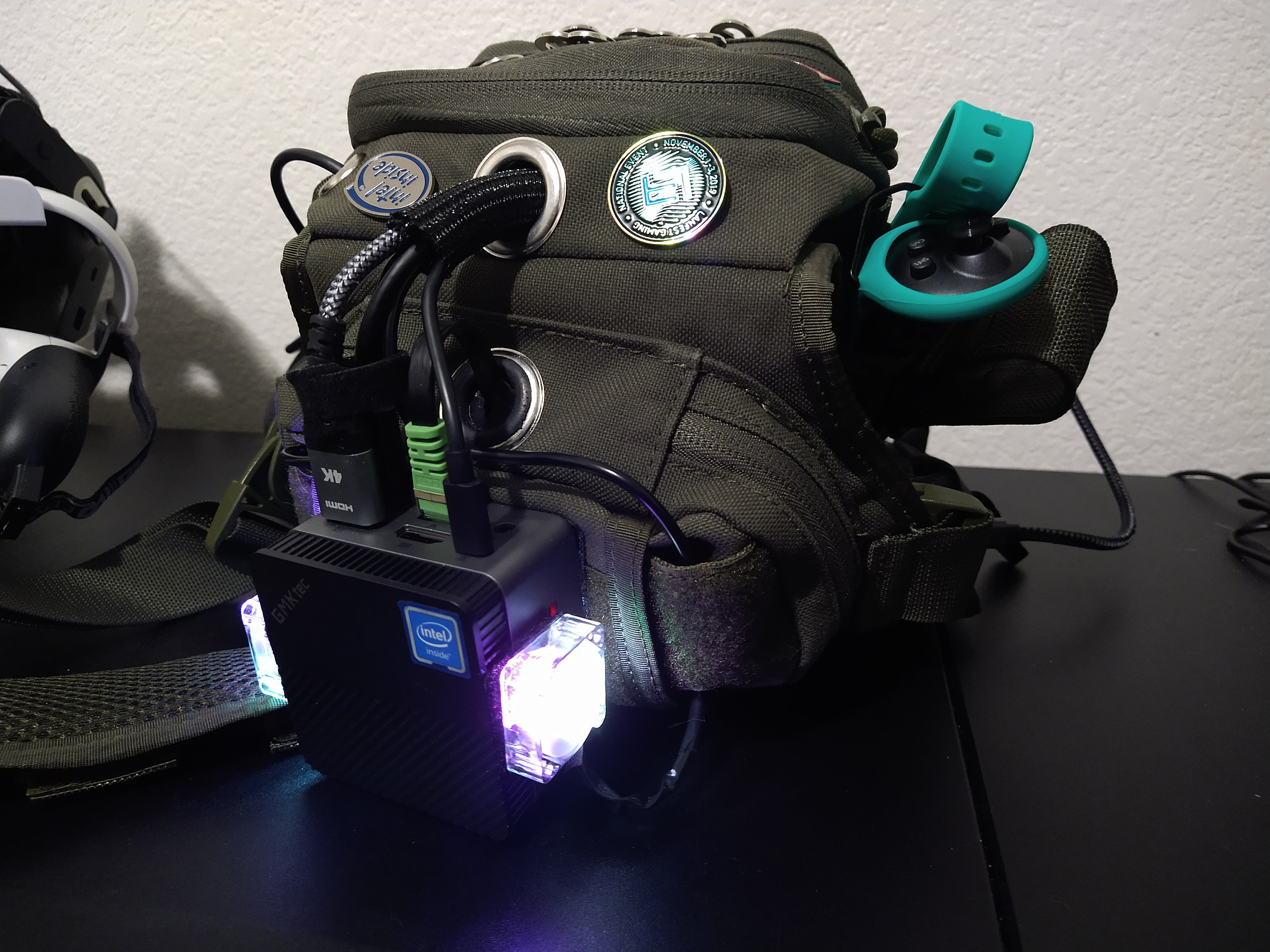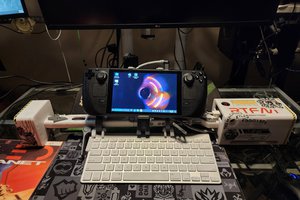
How it Started
Originally made as a portable wearable display into VR, this is a project that evolved into being an actual PC separate from VR, but can mesh with a VR headset as I'll outline further in this article.
1. What is it?
This is a modular wearable PC containing a full Windows 11 desktop PC, not your standard fare raspberry pi project. It's built into and outside of a Drop Leg tactical military bag - which I mainly got because I wanted a green bag with a bunch of pockets and ran across it online. It can be slung over a shoulder, worn on a leg (not pictured), or folded into a Desktop form when I don't want to wear it, or want to charge its battery and run it off another cable, or plug it into a wired network... etc. Various situations can come up, and I don't want any shortcomings for such situations. Often what I've seen at r/cyberdeck and other custom small builds online are really beautiful creations that are all tucked inside of a rigid box, often with a keyboard also built into it. Those are a build once kind of thing, and can never be changed or altered without ripping it apart and effectively redoing it. Some go extra lengths to actually have changeable custom parts. That's not something I wanted, and I wanted something wearable that can simply swap out standard parts as tech improves. I want the project to grow physically over time as I continue to get better tech and dive more into finer details to make the perfect always-worn kind of PC. While originally it was a project to get a flashy look on VR, it grew into something much much more.
2. Wearable?
Yup! Maybe not as fancy as you'd think, as until extremely recently I didn't even have a 3D printer, I can barely do any 3D modeling of any kind or CAD, I can't sew, I can't really draw, and I'm not very good at creating physical things without premade pieces and instructions. But I know how computer parts and cables work, and I can use a hammer with some other tools. Literally. So.. I did exactly that, except without the instructions. I took a tiny PC, figured out how to correctly power it with a fat battery and a USB power delivery decoy, and built it into a bag with a bunch of compartments that a tiny backpack wouldn't have, and that a standard backpack would be too bulky and large for. Something flexible, yet light enough to wear for most of a day while walking and standing around at a convention like a LAN event. Using it all day without having to take out my phone while also being able to sit down and game - and not change devices entirely like you normally would? That's the dream.
3. Specs? Modular?
Well, it's a full Mini PC with an Intel N5105 processor, 8GB of LPDDR4, and 512GB of SSD storage with 2x HDMI, 3x USB3, gigabit ethernet, Bluetooth 5.2 support, Wifi 6 connectivity, and a microSD slot with a max power draw of 36W packed into a tiny cube. Usually it's only using around 10W, or even less if I set it in power saving mode. I designed it so that I can swap out the battery with another PD-supported battery, any HDMI display that can be plugged in, either for mirroring or extend additional screens, and basically any USB or bluetooth device can be augmented for input devices and audio. By attaching this Mini PC externally to the bag, I don't have to worry about thermals anywhere near as much as other wearables or boxed builds. The entire Mini PC cube weighs about 0.5lb and is attached with industrial strength velcro straight onto the bag that already has velcro by design - making this a perfect match. I have several different forms of compatible input, and several different outputs that I use with this project which I will detail further down. Because it's not an ARM processor, I can throw whatever OS I want on it. Out of laziness (and curiosity, as I'm a win10 user) I kept the Win11 Home install that it came...
Read more » Auron
Auron
 Retroplayer
Retroplayer
 Sp4m
Sp4m
 Tom Nardi
Tom Nardi
 Starhawk
Starhawk